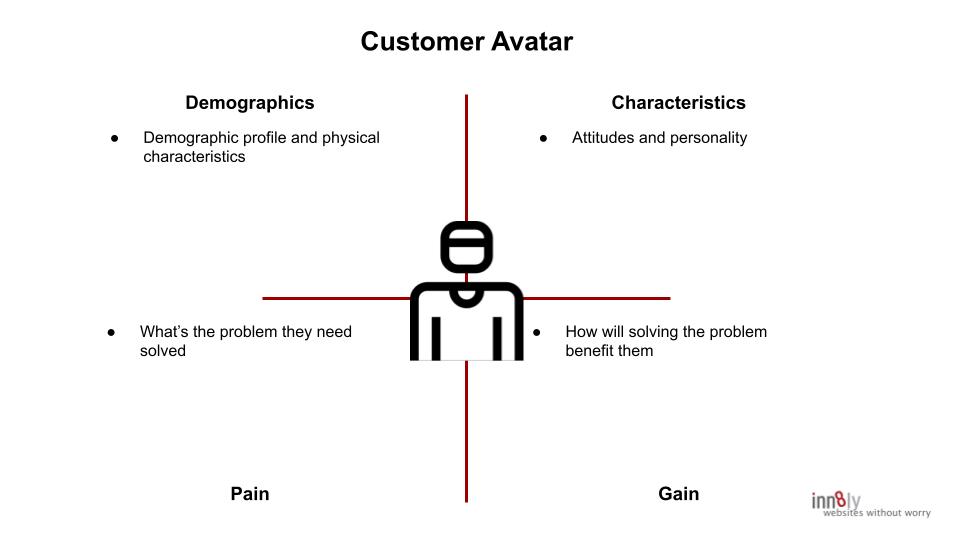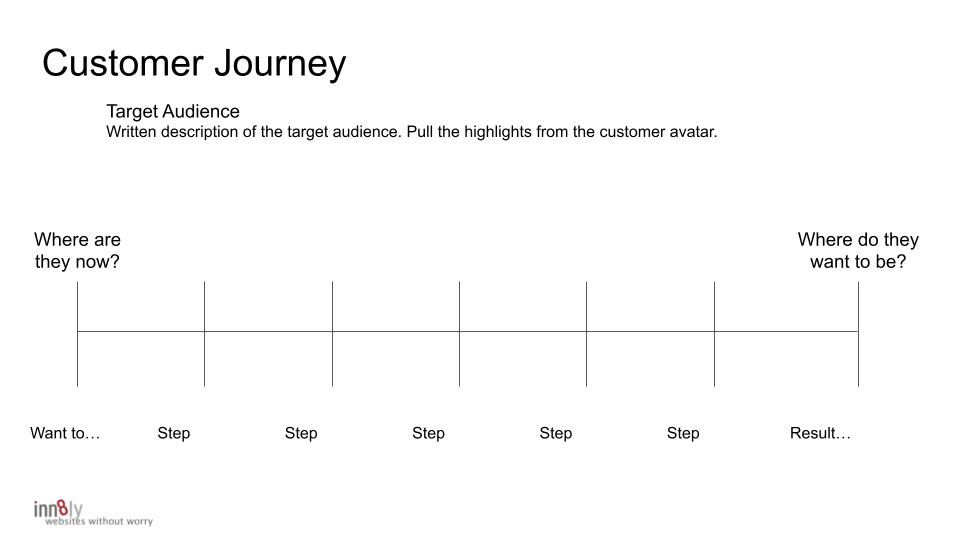It’s a digital world. Your website serves as the hub of your digital marketing wheel. It’s the fulcrum for every interaction a potential customer has with your brand, from the moment they discover you to the post-purchase experience.
But building an effective business website transcends aesthetics and functionality; it starts with a deep understanding of who you’re speaking to—your customers and their journey should be the heart and soul of all your marketing efforts.
If this truth is especially evident for your website, it’s doubly crucial for marketing landing pages. You have put time and treasure into attracting prospects to your landing page, so crafting a page that resonates with and supports prospects on their journey is vital.

Get the right message to the right person at the right time. ~ Direct Marketing Axiom
Better Landing Page Copy Using ChatGPT
Every customer experience with your brand is part of their journey—a journey that’s as unique as the individual embarking on it. Recognizing this, creating an impactful marketing landing page begins not with design or copy but with your customer’s avatar and mapping their buyer’s journey. Effective landing page copy starts with strategy. When I audit websites, this is the most common challenge I see. The websites, even the pretty ones, don’t have a strategy as their foundation.
Better marketing and superior landing page copy start with deeply understanding your ideal customers’ lives. It’s vital that you understand their desires, challenges, questions, and how your business fits into their narrative. In addition, recognize that their journey isn’t static. It has nuances that change as their journey progresses. Combining the customer avatar and journey map will guide the development of effective marketing and landing page copy.
Defining Your Buyer Persona with ChatGPT
Objectivity is key to crafting accurate customer avatars. In most cases, you are not your customers, so you are not the best judge. This is where a tool like ChatGPT becomes useful.
Use ChatGPT to begin your deep dive into your target audience’s profile. ChatGPT will give you a place to start. It will help you sculpt the perfect buyer persona. Chat GPT will be objective. Then, you can add nuances drawn from your experience with your customers.
But where do you start?
You start with the customer avatar.
Define Your Audience with a Customer Avatar

Demographics: Who are they? Understanding age, gender, location, and occupation helps you determine the best media (spokes) to deliver your message. Demographics will also influence some design elements. Older consumers need and value more contrast.
Characteristics: What makes them tick? How do they think? Are they curious, confident, self-assured? Understanding your prospect’s attitudes will influence how you speak with them.
Pain Points: What challenges are they facing? What problem are they trying to solve? Identifying these allows you to position your product or service as the solution. Poke the pain!
Gains: What do they gain by choosing you? How will you solve their problem? This is where your value proposition shines.
The order here is important. You don’t start by shouting out your solution. Would you value this from a friend? Probably not, so don’t do it in your marketing.
Mapping Your Buyer’s Journey: A Step-by-Step Guide

Understanding your buyer’s persona is crucial, but it’s only the first piece of the puzzle. The next step is to map the buyer’s journey—the path your customers take from becoming aware of their problem to choosing your solution. This journey is rarely linear, but a map of the buyer’s journey will help you anticipate their needs (questions) and tailor your marketing efforts accordingly.
Step 1: Identify the Stages of the Journey
The buyer’s journey typically has four stages: Unaware, Aware, Consideration, and Decision.
Unaware: An obvious but often unappreciated truth is that even the best marketing won’t change a customer’s need state.
Sorry.
You’re not only not going to interest them if they don’t need what you are selling, chances are they won’t even see your marketing. Your efforts become part of the digital noise.
This doesn’t mean you should stop; you want to be there when their needs change, but be realistic about your goals.
Awareness Stage:
The potential customer realizes they have a problem that needs solving. This is the first step in the journey map where your marketing can impact customers. The marketing funnel has three broad stages. This initial stage is often called the top of the marketing funnel.
Consider what happened in their life that caused them to recognize that they have a problem that needs to be solved. Design your marketing to capture their attention at this stage, and you can join and support the buyer’s journey.
Consideration Stage:
In this stage, the customer has begun actively looking for solutions to their problem. This is the middle of the journey map and aligns with the mid-funnel area of the classic marketing funnel. They are in research mode. Design your mid-funnel marketing to support them where they are. Supporting their journey in this way is your opportunity to build a relationship (trust) with your prospect.
Decision Stage:
This is the time when the customer chooses a solution that best addresses their problem. Your goal here at the bottom of the funnel is to make your solution their choice.
Using ChatGPT, you can generate content that resonates with each stage by understanding the mindset and needs of your buyer persona during their journey.

Step 2: Determine Touchpoints
Touchpoints are where customers interact with your brand during their journey. These include social media, your website, email campaigns, and more. To map these effectively:
- List all possible touchpoints where your potential customer might interact with your brand.
- Align the touchpoints with the journey to determine the best content for each interaction.
Step 3: Understand Questions and Obstacles
Each stage of the buyer’s journey comes with its own set of questions and obstacles.
Awareness Stage:
Customers are awakening to their needs. They might ask, “What is my problem?” Use ChatGPT to create content that resonates with their fresh interest and helps them clarify their issue.
Imagine Sarah, a busy professional in her late 20s. Her morning routine is a flurry of emails, meetings, and shuttling kids to activities. One morning, her phone dies an hour into her commute. Suddenly, she’s made aware of just how reliant she is on her device for everything from navigating to staying connected with her team. This experience plants the seed that it may be time to explore better battery life options. ChatGPT can help craft ads and social media posts that resonate with Sarah’s sudden realization that her current phone isn’t cutting it.
Consideration Stage:
At this point, they are deep into their journey. They will be asking questions like, “What are my options?” ChatGPT can help draft comparisons or educational content showcasing different solutions here.
After doing some initial research, Sarah finds herself wading through multiple phone upgrade options – each touting longer battery life. She’s in the consideration stage, actively comparing features, reviews, and prices to determine which new phone is the best fit. This is where ChatGPT shines, generating side-by-side comparisons that objectively lay out the pros and cons of each option. A well-structured comparison guide can influence Sarah’s choice. Your content helps Sarah pick your product over a competitor’s offer, but it does so in a trustworthy way.
Decision Stage:
It’s decision time. This is when trust and value-for-money issues arise. ChatGPT can assist in editing testimonials, crafting case studies, and creating other trust-building content. Your goal is to make the sale the next logical step in the buyer’s journey, which leads to long-term, valuable customers.
Sarah has narrowed it down to several phone choices, but she’s stuck. The prices are similar, and the features are comparable, but she needs that final nudge to make her decision. Customer testimonials highlighting your superior battery life and overall performance could be the tipping point. ChatGPT can distill customer reviews into persuasive case studies that build trust and confidence. You can use these case studies to validate your product’s ability to deliver on its promises.
Step 4: Align Content with the Journey
Now that you’ve identified the stages, touchpoints, questions, and obstacles:
- Develop content strategies for each stage of the journey. ChatGPT can generate initial drafts, headlines, and content ideas catering to each stage’s needs.
- Ensure that your content addresses the questions and overcomes the obstacles identified in the previous step.
- Edit like a fiend. The AI is like an intelligent intern who wants to please. It’s up to you to ensure that the content matches your voice and resonates with your users.
Step 5: Optimize and Iterate
Creating landing page copy isn’t a one-time task. It requires continuous refinement. Water the flowers and prune the weeds.
- Use analytics to track how effectively your content moves customers through the journey.
- Update customer avatars and journey maps regularly based on analytics, conversions, lifetime value, customer feedback, and changes in behavior.
- Don’t assume – use campaign testing to assess what’s working and what’s not.
Customer Avatars and Journey Maps
I cannot stress this enough… having customer avatars and mapping the buyers’ journey are both essential steps in creating effective marketing that engages prospects and builds trust by supporting their journey. Understanding the stages your customers go through and their questions at each stage lets you craft a more personalized and engaging experience.
This is especially important for a landing page. Your audience is there on purpose, and they want the information. The more you can support their journey, the more they will trust you and purchase from you for the right reasons.
ChatGPT can be helpful in this process, offering insights and generating content that speaks directly to your buyer’s needs at every stage of their journey. You will discover ideas that you hadn’t considered. Remember, the goal is to guide prospects smoothly from awareness to decision, using content that educates, engages, and convinces them that your solution is the right choice.
Here are two detailed avatar examples for women in their mid-thirties who are married, college-educated stay-at-home moms to an infant and a toddler, but with contrasting attitudes as their growing family needs a new vehicle:

Avatar 1: Jessica Phillips ~ Big-Picture Thinker
Demographics:
- 35 years old
- Married to Sam, 37
- Two children – Lucas (3 years old) and Ella (9 months)
- Master’s Degree in Business
- Living in suburban Dallas, TX
Characteristics:
- Confident and self-assured
- Values efficiency and practicality
- Forward-looking and able to see the big picture
- Trusts her instincts and decision-making abilities
- Tends to take calculated risks
Pain Points:
- Feeling constrained by her current sedan as her family grows
- Wants more versatility for hauling kids, groceries, strollers etc.
- Needs to be able to accommodate future family growth
Gains:
- A safe, reliable family vehicle with ample cabin/cargo space
- Good fuel economy for eco-consciousness and cost savings
- Flexibility to add a third child without being outgrown

Avatar 2: Emma Robertson ~ Detail-Oriented Overthinker
Demographics:
- 36 years old
- Married to Michael, 38
- 2 children – Emma (2 years old) and Liam (11 months)
- Bachelor’s Degree in Marketing
- Living in suburban Atlanta, GA
Characteristics:
- Analytical and detail-oriented to a fault
- Often doubts herself and second-guesses decisions
- Risk-averse needs to examine all angles before acting
- Values safety and security above all else
- Can be indecisive when faced with multiple options
Pain Points:
- Worries that her small SUV won’t be spacious enough
- Concerns over fuel costs with a larger vehicle
- Overwhelmed by the number of configurations and options
Gains:
- A family vehicle with top safety ratings and the latest tech
- Ability to keep using it for many years as her kids grow
- The peace of mind in knowing she made the right choice
Using ChatGPT, we can map out the buyer journeys for these two distinct personas as they navigate from the awareness stage of needing a new family vehicle to ultimately choosing a model that best fits their specific needs, mindsets, and priorities.
Here are tailored buyer journey maps for the two distinct personas as they navigate from awareness to decision in choosing a new family vehicle:
Jessica Phillip’s Buyer Journey:
Awareness Stage:
With her current sedan feeling cramped and impractical, she realizes they need to upgrade to a larger vehicle to accommodate their growing family’s needs. Attention-grabbing social media ads portraying the versatility of a particular SUV or minivan could pique her interest.
Consideration Stage:
Practicality is her priority, so she’s open to exploring different models and learning about their advantages. Comparative guides and video walkthroughs generated by ChatGPT, outlining key features like cargo capacity, fuel efficiency, and safety ratings, will be valuable.
She’s also looking at the long-term value and potential to accommodate a third child down the road. Cost analyses from ChatGPT showing long-term ownership costs could be persuasive.
Decision Stage:
Reviews from other big-picture thinker moms raving about the flexibility and utility of certain models could seal the deal. ChatGPT can source authentic testimonials emphasizing those key benefits to build trust.
Ultimately, she’ll choose the option that checks the most boxes – providing versatility, efficiency, and room to grow for her fast-paced lifestyle.
Emma Robertson’s Journey:
Awareness Stage:
Safety is her prime concern, so news about new family vehicle safety ratings/features could stop her in her tracks. Social posts from car experts highlighting top safety picks would get her gears turning.
Consideration Stage:
She’ll want to examine all possible options extremely thoroughly. Detailed model comparison guides generated by ChatGPT will allow her to meticulously weigh the pros and cons across all the key areas – safety tech, interior space, fuel economy, etc.
ChatGPT can also provide spreadsheet breakdowns of costs for her to analyze and pick apart from every angle to ease her budget reservations.
Decision Stage:
Third-party expert reviews, safety organization endorsements, and real-life testimonials from equally meticulous parents will be critically important. ChatGPT can compile this proof to help validate her decision.
She’ll likely make an extremely exhaustive pros and cons list before finally choosing the model that offers the absolute premium in safety, long-term reliability and value for her protective parenting mindset.
By understanding the contrasting perspectives and priorities of these personas, the marketing content and channels can be strategically mapped for each stage to resonate with their specific journeys.
Landing Page Structure
Compelling Benefit Headline
Your landing page’s hero area is the first handshake between your website and your visitor. It’s here that you make your first impression, and as we all know, first impressions matter. Using ChatGPT, you can generate headlines that not only capture attention but resonate on a personal level with your audience. These headlines should speak directly to the benefits your customers will enjoy, making it impossible for them to scroll away.
Supportive Body Content
With your compelling headline in place, the body of your landing page must carry the torch forward. This is your chance to elaborate on the benefits, address potential objections, and build a narrative that leads your visitor to conversion. ChatGPT can assist in structuring this narrative, ensuring that each section of your landing page reinforces your initial promise and guides your visitor closer to making a decision.
Reasons to Believe
Trust is ‘currency’ in the digital marketplace. Testimonials, five-star reviews, and industry credentials are not just badges of honor; they reassure your visitors that they’re making the right choice. Don’t bury trust elements below the fold. Introduce them early and often. They should appear throughout the page content.
Overcome Objections
Prospects arrive with questions and objections, and it’s your job to anticipate and address them head-on with your landing page copy. ChatGPT can help you identify common objections based on your buyer persona and stage in their journey. ChayGPT can then generate responses that not only alleviate concerns but also reinforce the value of your offering.
For a more detailed exploration of landing page best practices, read our post: Landing Page Best Practices.
Compare and Contrast Content
Here’s a comparison of the two avatars and their respective buyer journeys, along with example ad copy tailored for each phase.
Jessica, the Big-Picture Thinker vs. Emma, the Detail-Oriented Overthinker
While these two personas share similar demographics, their mindsets and priorities differ significantly when it comes to making a major purchasing decision like a new family vehicle.
Jessica, the big-picture thinker, values versatility, efficiency, and long-term practicality. Her self-assured nature means she trusts her instincts once she identifies an option that checks the key boxes.
Emma, the detail-oriented overthinker, however, gets bogged down in the minor details and options analysis paralysis. Safety and risk mitigation are her top concerns, often causing indecisiveness.
Awareness Stage Ad Examples:
Big Picture Thinker:
“Your family doesn’t fit into boxes. Why should your vehicle? The all-new Honda Odyssey – redefining what a family SUV can be.”
Detail-Oriented Overthinker:
“Precious cargo on board? The Honda Pilot was just named an IIHS Top Safety Pick+ for the 5th year running.”
Consideration Stage Examples:
Big Picture Thinker:
“Cabin fever? Ditch the cramped sedan and discover the spacious, flexible interior of the Odyssey. With removable seats, you’ve got room to spare.”
Detail-Oriented Overthinker:
“Safety Comparison: Honda Pilot vs Toyota Highlander vs Subaru Ascent. See how they stack up on crash tests, driver assists and more.”
Decision Stage Examples:
Big Picture Thinker:
“‘A total game-changer for my squad!’ See what these busy moms have to say about the adaptability of the Honda Odyssey.”
Detail-Oriented Overthinker:
“Honda Sensing™ Suite comes standard, putting your family’s safety first with collision warning, lane keeping assist and more advanced tech.”
By drilling down into their contrasting attitudes, the marketing can be hyper-personalized to connect with their priorities at each step – whether prioritizing versatility and convenience or safety and risk minimization.
I used ad copy examples to demonstrate the differences, but tailoring the content for the targeted avatar is especially important for the landing page copy. Once a prospect arrives on the landing page, the content must engage with who they are and support them on their journey.
Jessica just needs to see that the Odyssey checks the major boxes for her growing crew’s needs, while Emma requires quantifiable proof and expert validation that it’s the safest, most reliable choice. Since the ad headlines were written to appeal to specific avatars, you will know who the landing page visitors are and can write appropriate landing page copy.
While this is a hypothetical example, I’ve had personal experience with this approach and its impact on marketing effectiveness. For example, a team I led developed HELOC (Home Equity Line of Credit) direct mail that targeted specific groups based on their attitudes toward debt. In every case, the test beat the control by a large margin.
From Persona to Proof – Elevate Your Landing Page Copy
Creating an effective business website starts with understanding your audience at a granular level. ChatGPT is a powerful ally in this journey, offering insights and generating content that speaks directly to your target audience at each stage of their journey. By leveraging this technology, every element of your landing page, from the headline to the call to action, is meticulously tailored to convert visitors into customers.
In digital marketing, combining technology and creativity opens up endless possibilities. ChatGPT is more than just a tool; it’s a partner in crafting digital experiences that meet and exceed customer expectations. As you embark on this journey, remember that the key to success lies in understanding your audience and speaking to their needs and desires using their own words.
-
Profitable Google Ads – 7 Steps to a Revenue Faucet
Learn how profitable Google Ads Search campaigns are possible and likely if marketers are patient and make data-driven adjustments.
-
How to Build an Email List Fast – 10 Tactics Every Small Business Should Know
An email list is both a powerful and an efficient marketing tool. 10 ways to build an email list fast.
-
Want to Increase Marketing Effectiveness?
Maximize marketing ROI with performance tracking.
Author: James Hipkin
Since 2010, James Hipkin has built his clients’ businesses with digital marketing. Today, James is passionate about websites and helping the rest of us understand online marketing. His customers value his jargon-free, common-sense approach. “James explains the ins and outs of digital marketing in ways that make sense.”
Use this link to book a meeting time with James.

